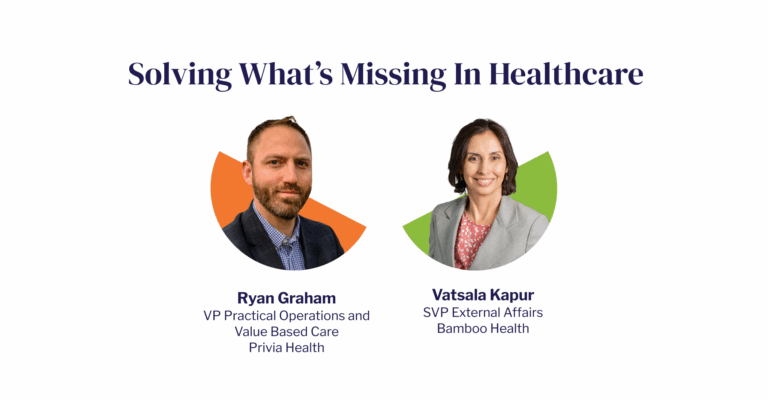Rising substance use and mental health risks are straining an already burdened healthcare system, highlighting the need for industry change to sustain a path forward. Adding to this issue, payers and providers face continued challenges around delayed data processing and equitable healthcare access. To help solve this, payers must deepen their partnership with providers and utilize their vast insight into health populations nationwide.
Let’s explore several opportunities for payers to encourage prompt member engagement based on real-time insights.
Investment in Real-Time Insight Technology
Payers and providers can only take on value-based care (VBC) risk with real-time information about their members’ health journeys. Currently, many payers rely on traditional claims data, which has a 60-90-day information lag, leading to missed care opportunities, higher costs and poor patient outcomes. In fact, according to a 2023 report from the American Hospital Association, 62% of the 1,500-plus patients surveyed said treatment had been delayed because of their insurance provider, resulting in patients’ condition worsening.
Rather than lagged claims data, both payers and providers need tools that can transform data into actionable insights in a centralized workflow, enabling prompt, coordinated care for members. Technology solutions can help connect the dots across organizations and increase alignment between payers and providers. When payers invest in streamlined data insights, providers can more quickly coordinate care while reducing costs.
Focus on Vulnerable Populations to Generate Value-Based Care Outcomes
Serious mental illness and behavioral health issues are becoming more common while access issues remain, leading to heightened patient utilization rates and greater strain on the health system. The need for effective payer intervention and increased focus on these vulnerable populations have never been more pressing.
The PwC Health Research Institute found that payers’ behavioral health costs remain relatively lower than their other medical costs, indicating that payers are underestimating the impact of behavioral health when looking at what their total cost of care will be next year. As patients incur costs related to behavioral healthcare, this creates an unplanned strain for payers who haven’t yet invested in proactive measures (including real-time utilization alerts) to mitigate the system burden.
With better data to show access disparities and utilization rates, insurance plans could proactively recognize the potential impact of these payments and adjust regionally for more equitable engagement with the health system.
This increased engagement with behavioral healthcare would also allow payers to actively contribute to addressing the broader issue of substance use disorder and co-occurring physical and mental health challenges by directly supporting improved health outcomes for communities in need and reducing the overall strain on the health system.
Maintenance of Close Partnerships With Providers
As providers continue to focus on the shift to VBC, along with the rest of the industry, payers will need to prioritize provider partnerships to pursue success. Both organizations reap the benefits, such as increasing revenue and improving patient care, when payers and providers are aligned.
Even when patients are able to access care, many struggle with finding the appropriate care, as there are 7.5 million misdiagnoses a year in U.S. emergency departments, according to KFF. Each incorrect diagnosis increases healthcare costs overall, further burdening the system. Addressing this challenge will require close communication with providers to ensure patients get the care they need and the healthcare system can sustain itself without raising costs.
As payers strengthen their collaborative efforts with providers, their investment in real-time insights and technology solutions is key to addressing gaps in care. By maintaining close partnerships with providers and prioritizing actionable insights, payers can improve patient care while also contributing to the sustainability of the healthcare system by reducing misdiagnoses and ensuring appropriate care delivery.
Contact us to learn how real-time intelligence can help close gaps in care.



